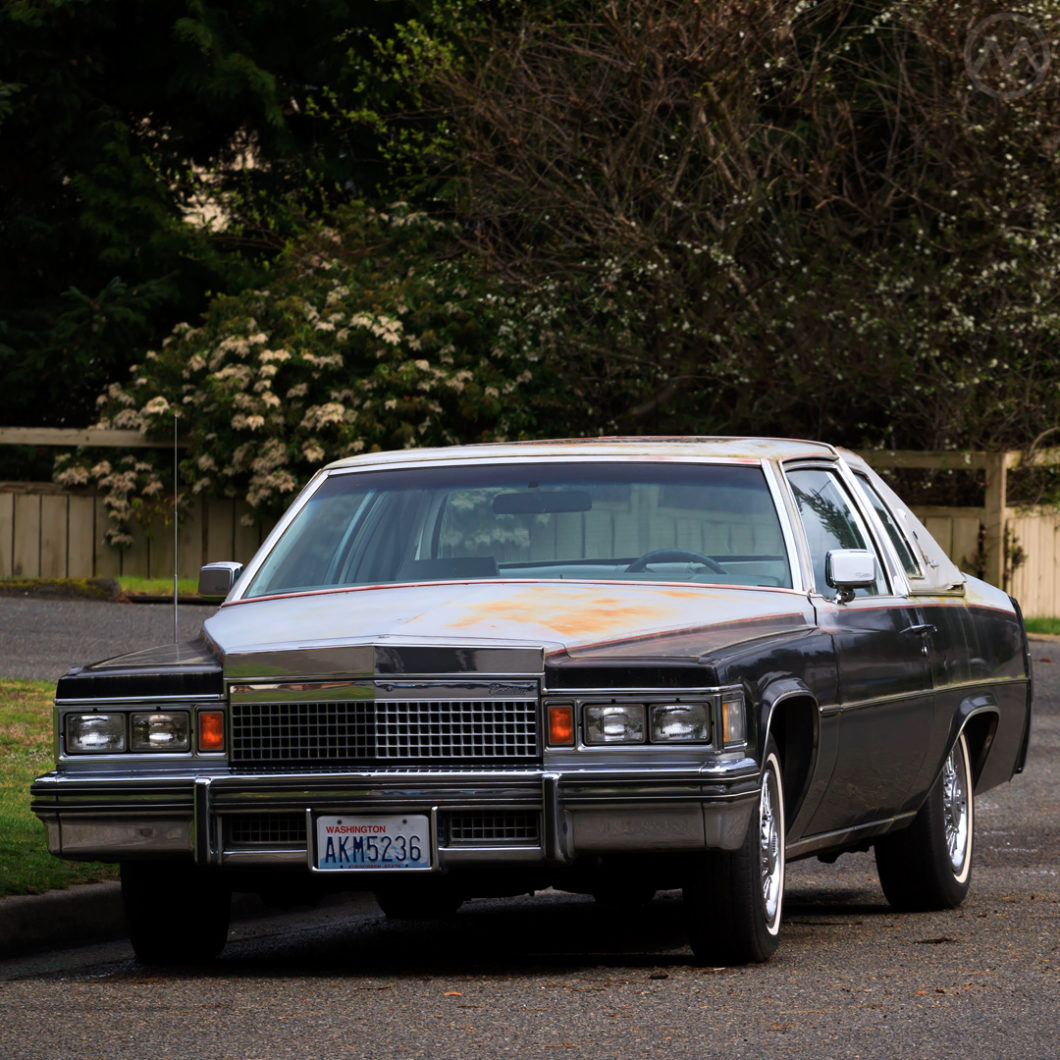“Regional” and “Seasonal” special models were once a Detroit staple, particularly from the 1950s into the 1970s with models as obscure as the fifties Dodge Coronet “Texan” (Texas only) to AMC’s Rebel “Mariner” (Pacific Northwest), to Oldsmobile’s Cutlass “Starburst” – a rare package seemingly only sold in Minnesota and the Dakotas.
These cars gradually fell away as rationalization dictated lower costs, with specially-tooled metal pieces on cars like the Texan giving way to graphics and special trim on the AMC, to mostly to graphics on cars like the Starburst. The cars were also sometimes unique to a dealer (who built the package out of accessories), making them hard to trace the exact history of.
Geographic specials paved the way for cars like “designer” Lincolns and AMCs, and later Eddie Bauer and Nautica Fords – the concept is still alive today in Gucci Fiat 500s, etc. But Cadillac continued to offer seasonal and regional models long after most other brands – into the early 1990s, and this rare bird is of the old school – a 1979 Coupe DeVille D’Marchand.
D’Marchand, Chicago, Islander, Ritz
Offered for just one year, 1979, the D’Marchand was also called the Chicago Edition or the Islander depending on where it was sold. Purportedly, buyers at George Olsen Cadillac in San Francisco saw them as the “Ritz” edition, but that’s unconfirmed. The car was introduced in the late spring of 1979, and went largely unnoticed by the press.
Every D’Marchand was slate firemist over black, with a matching black-and grey leather interior and a silver vinyl top, and their special trim and interior pieces were largely installed at the factory. They were sold through the biggest Cadillac stores on a regional basis with some final touches – dash plaques and labels – added by the dealership.
Irrespective of the name applied later, from the factory they were all “D’Marchand Coupe” orders. It did not come cheap – ticking the D’Marchand box would cost you $1,825 and a mildly optioned D’Marchand could ring up a bill of $16,000+ – a $5,000 premium over the standard CdV.
The D’Marchand was mechanically identical to a regular Coupe DeVille, but the point was style and exclusivity.
The basic downsized ‘77-’79 DeVilles were already a good performing car in a time of reduced performance – a big 425 V8 helped – and won praise early on for their modernized road manners. Later on, as this platform grew older, it’d be labeled a “boat,” but in the early days even enthusiast pubs were surprised to find that for a two-ton car built for floating down the highway, it handled pretty well.
Cadillac offered many personalization touches for 1970s customers, and on the DeVille alone there dozens of paint combinations in single and two-tone and also a less-specialized “special,” the faux-convertible top Phaeton package offered on coupes and sedans.
The Phaeton and the D’Marchand were likely responses to aftermarket trends; as 1978’s Eldorado Biarritz Classic – a send-off for the outgoing jumbo Eldorado with multi-tone paint and every accessory Cadillac could throw at it.
The Superfly Effect
Earlier in the 1970s, dealer-accessorized cars with special vinyl tops or grills had also been a profitable and popular sideline for many dealers in urban areas – particularly after blaxploitation movies like Gordon Parks Jr.’s “Superfly” showcased heavily customized Cadillacs (and other similar luxury cars).
When a Cadillac-ized Corvette, created by New Jersey customizer Les Dunham, showed up in the James Bond movie “Live and Let Die,” the trend was officially mainstream – and accessory manufacturers like ASC and Wisco started churning out parts to trim-up regular Cadillacs for regular buyers.
The look of these trim items wasn’t confined to Cadillacs or to Pimps, but rather a continuation of the “neoclassic” trends of the 1960s as epitomized by cars like the Stutz II. If you couldn’t afford that or if you wanted just a little bit of customization, then dealers were happy to help you create something vaguely more restrained (maybe sans landau bars, but with a Rolls-Royce grill) with the custom parts they could buy – at a markup, of course.
Since exclusive editions could be sold for a premium and a factory finish would be even better, it’s no surprise Cadillac itself offered so many choices – but that too was a natural extension of longstanding Cadillac practice – tailoring cars to customers.
Savoir Faire
Exact numbers are unknown, but only a few hundred D’Marchands were built across the several different names.
Many of the dealer-created cars had fancy faux-French names which, to a Francophone, would be meaningless or silly, but they sounded good in the Studio 54 era.
Cars created with the aftermarket parts tended to be on the pimpmobile spectrum, but official factory-issued specials were much more restrained.
Cadillac continued to offer special editions with similar custom interiors, paints, and tops into the early 1990s, often labeled “spring specials,” but also under other names (though it never re-used “D’Marchand”). Even the Cimmaron got one – the gold-over-black Cimmaron D’oro.


I am looking at what is advertised as a D’Marchand Deville that is for sale. Reading your article it states that it came in matching leather interior. The one I was considering buying has the velour interior. Is this a red flag that it’s not a genuine D’Marchand?
Thank you
That’s a difficult question because the D’Marchand had some features which were different depending on the market and the dealer. It could also be something that was set up as a custom order. Best to consult the Cadillac forums or club on this one.
I have a 79 it has leather interior black & silver with a red beading with an A Plaque for the Original owner, I’m the second owner & it’s for sale